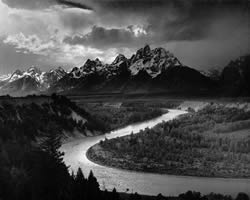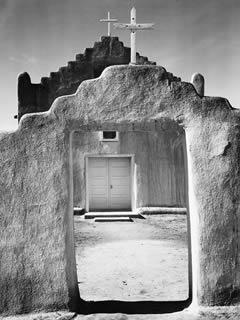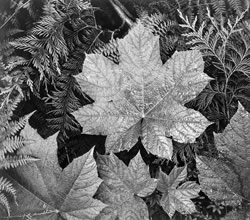
arts
The Nature of Photography
 Ask a baby boomer to name a famous photographer that they can remember as they grew up or in early adult years and you get the same answers. Many will mention Henri Cartier-Bresson, Walker Evans, or Margaret Bourke-White, but just about everyone mentions Ansel Adams. While the first three photographers are remembered for their portrait work primarily, Ansel Adams helped us to begin thinking more about the world around us. At just about the same time, people were clamoring for more concern about the environment. Some of our first baby steps as political activists came about because of our interest in clean air and water.
Ask a baby boomer to name a famous photographer that they can remember as they grew up or in early adult years and you get the same answers. Many will mention Henri Cartier-Bresson, Walker Evans, or Margaret Bourke-White, but just about everyone mentions Ansel Adams. While the first three photographers are remembered for their portrait work primarily, Ansel Adams helped us to begin thinking more about the world around us. At just about the same time, people were clamoring for more concern about the environment. Some of our first baby steps as political activists came about because of our interest in clean air and water.
His black and white photographs of the American West captured our imagination and presented a notion of nature supreme. In a bit of irony, this  grandson of a timber baron came to represent everything that was good about preserving our environment and protecting our natural resources. Growing up North of San Francisco, Adams got to wander and hike the dunes and forests of Marin County and the grand landscapes of the West at an early age. He was transformed by his time in Yosemite. We tend to think that his impact on the environmental movement came late in his life, but Adams’ first published photographs appeared in the 1922 Sierra Club Bulletin and his first one man exhibition was at the San Francisco headquarters of the Sierra Club in 1928. It was not long before thoughts of being a concert pianist were replaced by the idea of that he could be a successful nature photographer.
grandson of a timber baron came to represent everything that was good about preserving our environment and protecting our natural resources. Growing up North of San Francisco, Adams got to wander and hike the dunes and forests of Marin County and the grand landscapes of the West at an early age. He was transformed by his time in Yosemite. We tend to think that his impact on the environmental movement came late in his life, but Adams’ first published photographs appeared in the 1922 Sierra Club Bulletin and his first one man exhibition was at the San Francisco headquarters of the Sierra Club in 1928. It was not long before thoughts of being a concert pianist were replaced by the idea of that he could be a successful nature photographer.
Along with Paul Strand, Adams and Groupf/64 pioneered a West Coast style known as “straight photography,” where lens clarity and the absence of manipulation were the paramount concerns. Despite his early recognition, Adams still had to do a lot of commercial work before he became so famous that he could leave that behind.  That meant he did a lot of work for the likes of the National Park Service, Kodak, IBM, AT&T, Life, Fortune, Arizona Highway magazines.
That meant he did a lot of work for the likes of the National Park Service, Kodak, IBM, AT&T, Life, Fortune, Arizona Highway magazines.
A driven personality, Adams often worked 18 hour days for weeks on end, with no breaks or holidays. He also managed to write ten volumes on photographic technique as he promoted his “zone system.” Simply put, this zone system allows a photographer to visualize the final photo and control the exposure and development to make the visualization a reality.
Although he always thought of himself as a photographer first and foremost, he fought hard for the Wilderness Act to help preserve the beauty of Big Sur, the redwoods, sea lions and sea otters, and clean air and water. If an amateur’s photo is worth a thousand words, you can hardly begin to imagine how many words are contained in a single Ansel Adams print.
Jay Harrison is a graphic designer and writer whose work can be seen at DesignConcept. He's written a mystery novel, which therefore makes him a pre-published author.
© 2006-2013 ConceptDesign, Inc. Terms of Use
BoomSpeak - For babyboomers - by babyboomers.